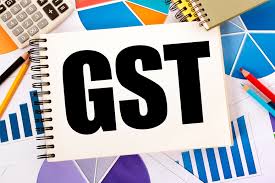Centre won't hit market to make up for GST compensation shortfall
The Centre will be borrowing Rs 5.03 trillion from the market in the second half, unchanged from what it had planned, but including the goods and services tax (GST) compensation paid to states.After its February Budget announcement of Rs 12.05 trillion of gross market borrowing, in May, the government had said it may have to borrow an additional Rs 1.58 trillion from the market to meet the GST compensation shortfall.However, going by the math given by the government, that extra amount will not be borrowed from the market. Instead, that could get adjusted from the government revenue without disturbing the market.But the numbers could still change in the end, say economists.“The Centre’s overall gross borrowing will be lower than what was projected after adjusting for the GST compensation for states. This is a very heroic assumption and could be done if the entire disinvestment target of Rs 1.75 trillion is on track,” said Madan Sabnavis, chief economist of CARE Ratings.“Besides, the relief to telecom companies would lead to loss at the non-tax revenue front, which could be between Rs 10,000 crore and Rs 20,000 crore. Fiscal deficit could still be higher as the funding is not coming from market borrowing but instead from small savings,” Sabnavis said.He felt if all goes as the government expects, it would be an achievement.“The implication is that the government’s fiscal deficit will be around Rs 1.6 trillion lower than budgeted, despite the modest rise in expenditure. This is a clear confirmation of the revenue upturn that is underway. This also suggests that the Centre’s disinvestment programme is assessed to be on track,” said Aditi Nayar, chief economist of ICRA.
The 10-year bond yield should open at least 10 basis points lower on Tuesday, and trade in the range of 6.1-20 per cent in the coming quarter, ICRA said. The yields closed at 6.21 per cent on Monday.
The government borrowed Rs 22,000 crore lower than planned in the first half, as the Reserve Bank of India (RBI) cancelled a few auctions, or refused to give in to market demand. To compensate for that, the government will be borrowing Rs 22,000 crore extra in the second half.
The gross amount, therefore, will remain at Rs 12.05 trillion, as announced in the Budget.
“The market was expecting around Rs 5.5 trillion, including GST compensation shortfall. So, there will be a knee-jerk reaction when the market opens and yields will come down by 6-7 basis points. However, other factors will play up to check the mood of the market, such as US yields rising to 1.5 per cent and inflation trajectory, among others,” said Anand Bagri, head of domestic markets at RBL Bank.The lower borrowing will also take away some pressure from the RBI, which has kept the liquidity plentiful to keep yields low, and runs an 'accommodative' policy stance till durable signs of growth are visible.“This benign borrowing number is supportive of the market, which will create room for the RBI to normalise its policy options,” said Soumyajit Niyogi, associate director at India Ratings and Research. However, a granular reading of the borrowing numbers could point to a different story.“The yields will be under pressure because the 10-year bond supply will be more than the 5-year supply (according to the calendar issued). Unless, of course, the RBI announces G-SAP (government securities acquisition programme) aggressively, going ahead. Also, yields could come under pressure if divestment numbers fall short,” said Rahul Singh, senior fund manager at LIC Mutual Fund. “The weekly T-bill auctions have also increased by Rs 3,000 crore, which will push up the short-term rates,” Singh added.Using the G-SAP and open market operations (OMO), the RBI has purchased about Rs 2.5 trillion of bonds from the markets. Out of the gross market borrowing plan of Rs 12.05 trillion, 60 per cent, or Rs 7.24 trillion, was planned for the first half. The government ended up borrowing Rs 7.02 trillion in the first half, with a weighted average yield and maturity of 6.19 per cent and 16.69 years, respectively, the Press Information Bureau said.The second half projection of Rs 5.03 trillion factors in “requirements for release of balance amount to states on account of back-to-back loan facility in-lieu of GST compensation during the year,” it said.“In H1 (first half), good demand for government bonds was seen from all major investor segments and the yields have remained stable,” the PIB statement said.The second half borrowing programme has come as a positive surprise, said Nayar.The 10-year yield, according to ICRA, would likely range between 6 and 6.2 per cent in the coming quarter, with rising crude oil prices to counteract the benign borrowing figures.
Download our App to get knowledge updates: https://play.google.com/store/apps/details?id=com.app.gstmitra



Comments
Post a Comment